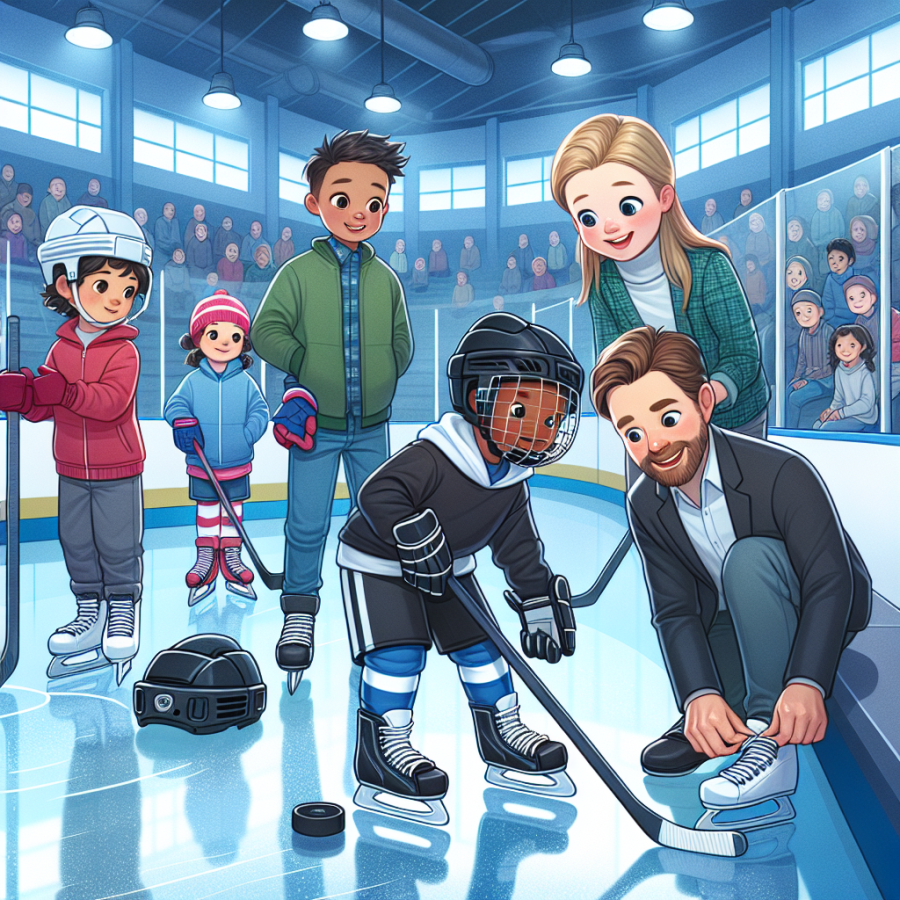Laying the Ice Foundation: Optimal Ages for Ice Hockey Introduction
When determining the optimal age for children to begin their journey into ice hockey, it is essential to consider both the physical demands of the sport and the developmental stages of young athletes. Ice hockey is a complex sport that requires a mixture of agility, strength, coordination, and cognitive skills. Introducing children to this sport at the right age can set a solid foundation for their future development and enhance their enjoyment of the game.
It is generally recommended that kids can start skating lessons as early as age three or four. This early exposure allows children to develop their balance and get comfortable on the ice without the added complexity of managing a stick and puck. Skating is the core skill of ice hockey, and becoming proficient in this area is crucial before adding the layers of stickhandling, shooting, and understanding the rules of the game.
As children approach the age of five to six, they can typically handle more structured ice hockey training. At this stage, they are usually more coordinated and can manage to carry a stick while staying upright on their skates. This age is a sweet spot for many children to begin learning the basic techniques of ice hockey, as they are still moldable and eager to learn, which can lead to rapid improvement and a strong grasp of the fundamentals.
Many hockey programs offer "learn to play" or "cross-ice" programs for kids in this age range. These programs focus on fun and skill development, using smaller rinks and equipment that is appropriate for their size and ability. The emphasis is not on competition but rather on learning and enjoying the game, which can foster a lifelong passion for ice hockey.
At ages seven to nine, children can handle more complex instructions and team dynamics. In this age group, they can start participating in more competitive play, usually in leagues that implement rules with a focus on skill development. Kids at this stage should be encouraged to play multiple positions to learn all aspects of the game and to figure out where they feel most comfortable and perform their best.
It's essential to recognize that each child is unique and will progress at their own pace. Parents and coaches should remain sensitive to each child's physical and emotional readiness to take on ice hockey's challenges. Pushing children too hard at a young age can lead to burnout or even injuries that could sideline them from the sport they may otherwise have enjoyed.
Read also:
Mastering the Green Baize: Snooker Strategies for Victory
Early Puck Drop: When Should Kids Lace Up Their Skates?
As parents and guardians explore the most suitable sports for their children, many ponder the ideal time to introduce their kids to the world of ice hockey. This thought-provoking question leads us directly into one of the sport's fundamental skills: skating. The ability to skate is a critical component of ice hockey, and as such, it's crucial to address when children should begin to lace up their skates and step onto the ice.
Embarking on the ice hockey journey requires a close look at physical capabilities, interest levels, and emotional readiness. Most experts suggest that the ages of 4 to 6 are a sweet spot for starting kids on skates. At this developmental stage, children typically possess the coordination necessary to start mastering the basics of ice skating.
It must be noted, however, that enrolling children in formal hockey programs may not be immediately essential. Early experiences can focus on general skating skills, which form the foundation of future hockey proficiency. By learning to balance on the blades, control their movement, and fall safely, children can gain confidence and a sense of accomplishment while fostering a love for being on the ice.
Structured skating classes or informal sessions on a local rink can both be beneficial. The key at this stage is to ensure that the environment is fun and pressure-free. Using games and playful instruction, children can learn skating skills without the rigors or competitiveness associated with formal ice hockey training.
As children acclimate to skating, it's also important to gauge their enthusiasm for the sport. While some kids may take to the ice with fervor, others might show less interest or even find it challenging. It is crucial to pay attention to these cues and encourage them accordingly. Forcing the sport on them can lead to a negative association with ice hockey and, possibly, sports in general. A child’s enjoyment and willingness to participate should be at the forefront of any decisions regarding the pursuit of this or any other sport.
When parents do decide it's time for their kids to start more hockey-focused training, look for beginner programs that emphasize skill development, teamwork, and sportsmanship over competition. Many of these programs may not begin with a puck or stick, as it's important first to become proficient in skating itself.
Safety on the ice is another essential aspect that should be addressed from the get-go. Beginners should be equipped with the appropriate safety gear, including helmets, knee and elbow pads, and gloves.




